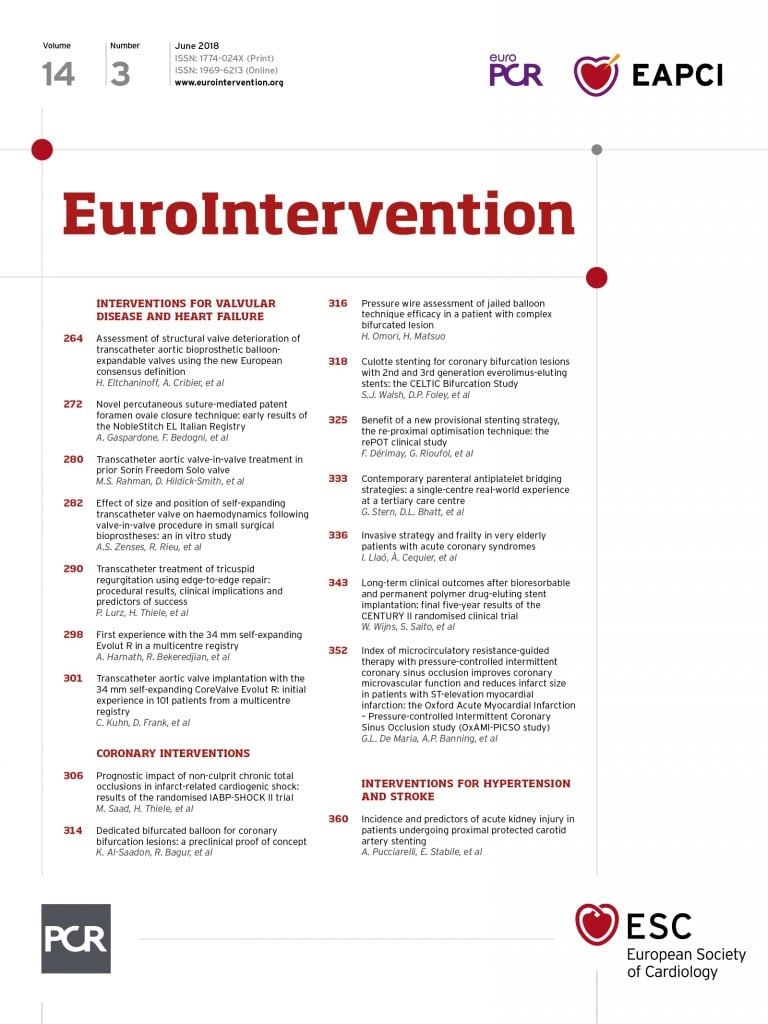

An 85-year-old man was admitted to our hospital with effort-related chest pain. Coronary angiography revealed moderate stenosis in the proximal left anterior descending artery (LAD) and the large side branch (SB) (Medina 0,1,1) (Panel A, Panel B). The jailed balloon technique was applied to protect the SB1. A pressure wire (OptoWire®; Opsens, Quebec, Canada) was used for measuring Pd/Pa during and at the end of the procedure. A 2.0×30 mm Ryujin™ Plus balloon (Terumo Corp., Tokyo, Japan) was used to protect the SB. XIENCE 3.5×23 mm and 3.0×28 mm stents (Abbott Vascular, Santa Clara, CA, USA) were deployed to the LAD lesion (Panel C). The Pd/Pa in the SB immediately after stent implantation was 0.34 (Panel D). The jailed balloon was then withdrawn easily, upon which Pd/Pa changed to 0.60 (Panel E). As the Pd/Pa value was suboptimal, kissing balloon inflation was performed without difficulty to recross a conventional wire. The final values of fractional flow reserve in the LAD and SB were 0.89 and 0.84, respectively. The final angiogram showed TIMI grade 3 flow in both the LAD and SB (Panel F).
The present report shows a beneficial effect of the jailed balloon technique using a pressure wire. The Pd/Pa dramatically increased after balloon removal, indicating recovery of flow in the jailed SB. This demonstrated that the jailed balloon could secure the lumen in the jailed SB.
FFR in an SB can provide significant information. Koo et al reported that only 27% of lesions had FFR <0.75 when SB stenosis was more than 75%2. The DKCRUSH-VI trial reported that there was less SB treatment in the FFR-guided group compared with the angiography-guided group (56% vs. 63%, p=0.07). However, the rate of failure to measure FFR of a jailed SB was 9.4%3.
The advantages of jailed balloon protection are enhanced SB protection by ostium spatial occupation of a jailed balloon and immediate SB flow restoration by eventual balloon dilation4. A potential strength of this technique is that jailed balloon protection may be used to facilitate the jailed pressure wire technique by protecting the pressure wire from both entrapment and risk of damage due to crossover stenting. We have evaluated only one case; however, we will evaluate a series of bifurcation cases in the future.
Conflict of interest statement
The authors have no conflicts of interest to declare.




